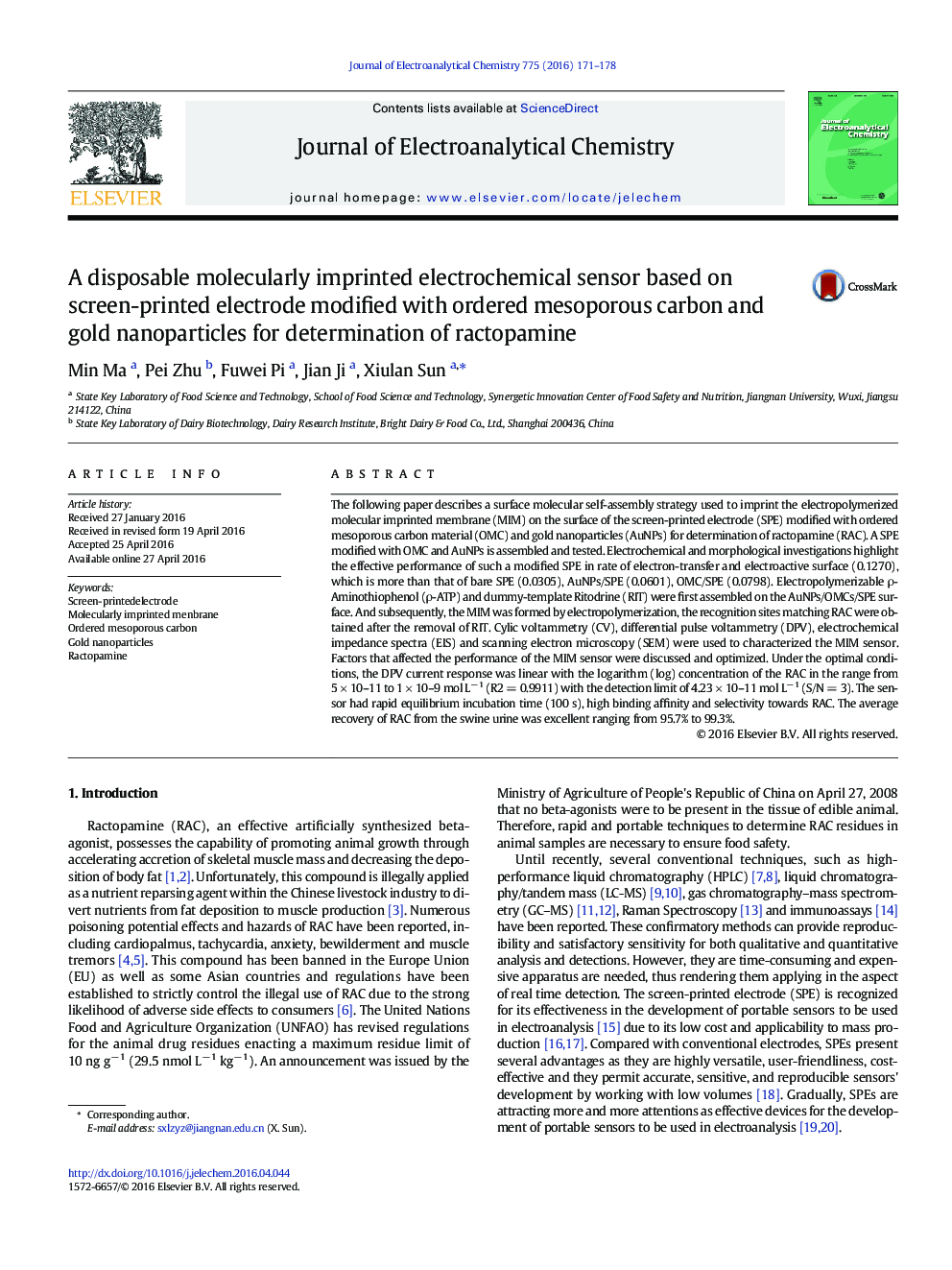| Article ID | Journal | Published Year | Pages | File Type |
|---|---|---|---|---|
| 217841 | Journal of Electroanalytical Chemistry | 2016 | 8 Pages |
•A novel and disposable (SPE) modified with ordered mesoporous carbon material (CMK-3) and gold nanoparticles (AuNPs) is assembled and tested.•Electrochemical investigations highlight the effective performance of such a modified SPE in electroactive surface(0.1270), which is more than that of bare SPE(0.0305), AuNPs/SPE(0.0601), OMC/SPE(0.0798).•The sensor developed is more sensitive than most available RAC detection methods reported.
The following paper describes a surface molecular self-assembly strategy used to imprint the electropolymerized molecular imprinted membrane (MIM) on the surface of the screen-printed electrode (SPE) modified with ordered mesoporous carbon material (OMC) and gold nanoparticles (AuNPs) for determination of ractopamine (RAC). A SPE modified with OMC and AuNPs is assembled and tested. Electrochemical and morphological investigations highlight the effective performance of such a modified SPE in rate of electron-transfer and electroactive surface (0.1270), which is more than that of bare SPE (0.0305), AuNPs/SPE (0.0601), OMC/SPE (0.0798). Electropolymerizable ρ-Aminothiophenol (ρ-ATP) and dummy-template Ritodrine (RIT) were first assembled on the AuNPs/OMCs/SPE surface. And subsequently, the MIM was formed by electropolymerization, the recognition sites matching RAC were obtained after the removal of RIT. Cylic voltammetry (CV), differential pulse voltammetry (DPV), electrochemical impedance spectra (EIS) and scanning electron microscopy (SEM) were used to characterized the MIM sensor. Factors that affected the performance of the MIM sensor were discussed and optimized. Under the optimal conditions, the DPV current response was linear with the logarithm (log) concentration of the RAC in the range from 5 × 10–11 to 1 × 10–9 mol L− 1 (R2 = 0.9911) with the detection limit of 4.23 × 10–11 mol L− 1 (S/N = 3). The sensor had rapid equilibrium incubation time (100 s), high binding affinity and selectivity towards RAC. The average recovery of RAC from the swine urine was excellent ranging from 95.7% to 99.3%.
Graphical AbstractFigure optionsDownload full-size imageDownload as PowerPoint slide
